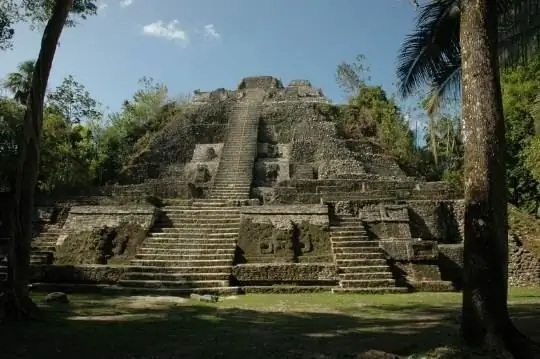
Description of the attraction
The ruins of the city of Lamanai (translated as "underwater crocodile") is an ancient cultural and religious center of the Mayan people, located on the ocean coast. Archaeological findings and traces of corn pollen in soil and rock sediments indicate that a Mayan settlement in Lamanai already existed in 1500 BC. Excavations in the vicinity have also revealed that Lamanai experienced a demographic and socio-political collapse that occurred in many other major Mayan cities in the ninth century AD. However, the settlement was not abandoned and until the Spanish occupation in the 16th century people lived there. During its heyday (classical period 250-900 AD) the city had about 20 thousand inhabitants.
For some time after the arrival of the Spaniards, the locals still remained in the city. But the cruel attitude of the conquerors forced the population to leave their homes. The Spanish conquistadors brought the fugitive Maya back to the cities to work on the land. Thus, Lamanai was repopulated. Under the control of Franciscan monks, the Indians were baptized, and two churches were built on the site of the Mayan sanctuaries. The widespread uprisings in the Spanish colonies did not bypass Lamanai, and in 1641, according to the documents of the Franciscan monks, the city was destroyed by fire and abandoned.
Following the Spanish withdrawal from Belize in the 18th century, British interest in Lamanai centered around sugarcane processing. A number of British workers and their families lived here during the last quarter of the nineteenth century, using Mayan mounds as foundations for their own homes. Thus, Lamanai is the Mayan city that has been continuously inhabited longer than the rest.
Archaeological excavations of the ancient city began in 1974. The ruins of Spanish churches and English houses have led scientists to assume that there are more ancient structures under them. A sanctuary under one of the churches was discovered, a lot of pottery, the age of the place was determined. Research continues to this day.






